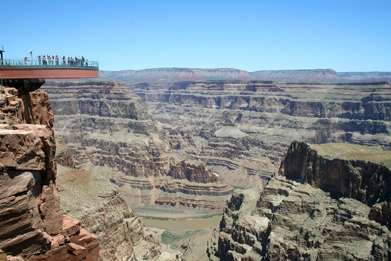Module 6 Summary
1. Module 6 Summary
Module 6 Summary

Hemera/Thinkstock
One of the most amazing engineering feats is the Grand Canyon Skywalk. Use your favourite search engine to find a video and/or an explanation to learn about how the skywalk was built. The skywalk is shaped like a horseshoe and has a walking path made of glass, but not any ordinary glass. A total of 46 panes of glass make up the floor of the skywalk—each pane consists of five layers of glass to give each pane a thickness of 8 cm.
Each individual layer of glass has a length of 3 m and a width of 1.2 m. Each layer of glass has to be laminated and then bonded together to form the five-layer pane. The total amount of surface area to be laminated can be determined. Determining the surface area is important because of the cost involved.
In Module 6 you concentrated on surface area. You extended your knowledge of two-dimensional shapes to three-dimensional objects. As part of this exploration, you calculated surface area obtained from the nets of three-dimensional objects. As well, you applied your area estimation skills to three dimensions. Your study involved the application of the formulas, in a variety of practical contexts, for the surface areas of cubes, prisms, cones, cylinders, and spheres. Lastly, you explored how changing an object’s linear dimensions changes its surface area.
You will apply many of these skills in the Module 6/7 Project.